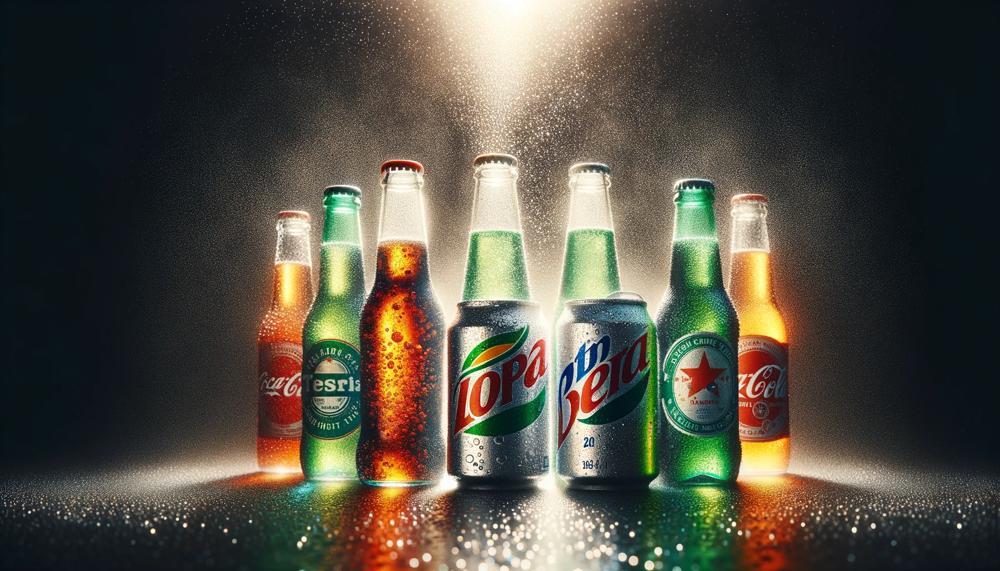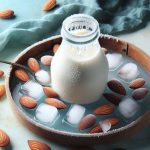When it comes to unopened soda, we all want to enjoy that satisfying fizziness. But how long can we expect the carbonation to last? Does it depend on the type of container or storage conditions? Let’s explore the shelf life of unopened soda and the factors that affect its carbonation.
Contents
Key Takeaways:
- The shelf life of unopened soda is estimated to be around 6-9 months from the date of manufacture and sealing.
- Sodas in glass bottles or cans generally last longer than those in plastic bottles due to less carbon dioxide loss.
- The quality of the seal, container material, and storage conditions can affect the duration of carbonation in unopened soda.
- While unopened soda will eventually go flat, it is still safe to consume even after it loses its carbonation.
- Storing soda in a cool, dark place and avoiding physical agitation can help prolong its carbonation.
Does Soda Go Bad? An In-Depth Look
Soda does go bad, but it does not pose a health risk like spoiled food. When soda is significantly past its sell-by date, it loses its carbonation and may also lose its flavor. However, it is still safe to consume. The expiration date on a soda can or bottle can give an indication of its freshness, but it does not necessarily mean the soda has gone bad. Checking the fizz, taste, and expiration date can help determine if the soda has gone bad.
How Long Does Soda Last?

The shelf life of soda can vary, but in most cases, carbonated sodas should last at least 6-9 months from the date of manufacture and sealing. The expiration date on the can or bottle can serve as a guide. However, the time between manufacturing and opening the soda can vary, so it is best to use the expiration date as a reference. Beyond the expiration date, the soda may start losing its fizz and flavor.
How Long Does Unopened Soda Stay Carbonated?
According to the USDA, carbonated sodas are not perishable and are safe past the date stamped on the container. However, flavor and carbonation will decrease over time. For best quality, the USDA recommends consuming unopened diet sodas within 3 months after the date expires, and regular sodas within 9 months.
How to Optimize the Shelf Life of Soda
To keep soda carbonated and preserve its fizziness for longer, follow these simple tips:
- Store in a cool, dark place: Heat and sunlight can accelerate the loss of carbonation in soda. Keep your soda away from direct sunlight and high temperatures to maintain its carbonation levels.
- Avoid exposure to heat sources: Placing soda near heat sources like stoves or heaters can cause the carbonation to escape faster. Store your soda in a location where it won’t be exposed to significant heat.
- Pour leftover soda into a sealed bottle: If you have any remaining soda after opening the can or bottle, transfer it to a tightly sealed container before refrigerating. This will minimize contact with air and help preserve the carbonation for a longer time.
By following these practices, you can optimize the shelf life of your soda and enjoy it with its refreshing carbonation intact.
| Tips | Description |
|---|---|
| Store in a cool place | Avoid heat and sunlight to prevent carbonation loss |
| Avoid exposure to heat sources | Maintain a safe distance from stoves and heaters |
| Pour leftover soda into a sealed bottle | Minimize air exposure by using a tightly sealed container |
Why Does Soda Go Flat?
Soda goes flat due to several factors that cause the loss of carbonation, resulting in a loss of its characteristic fizziness. The main reason behind this phenomenon is the escape of carbon dioxide gas from the liquid. Let’s take a closer look at the factors that contribute to the carbonation loss in soda:
- Faulty seals: If the soda container’s seal is not properly sealed, it can allow the carbon dioxide gas to escape, leading to the flatness of the soda.
- Gas permeability of container material: Certain container materials, such as plastic bottles, can be more prone to gas permeability, allowing the carbon dioxide to escape more readily.
- Physical agitation: Dropping or shaking the soda bottle can also cause the carbon dioxide to escape, resulting in a loss of carbonation.
- Temperature variations: Exposure to temperature fluctuations can accelerate the release of carbon dioxide from the soda, leading to a faster loss of carbonation.
- Exposure to high temperatures: When soda is exposed to high temperatures, such as leaving it in the sun or storing it in a hot environment, it can cause the carbon dioxide to escape more rapidly, causing the soda to go flat.
- Nucleation of gas bubbles: Certain substances or impurities in the soda can act as nucleation sites, where the carbon dioxide bubbles form and escape more easily, accelerating the loss of carbonation.
Considering these factors, it is important to handle and store soda properly to minimize carbonation loss and prolong its fizziness. By ensuring tight seals, using containers with low gas permeability, avoiding physical agitation, and storing soda in a cool and stable environment, you can help preserve its carbonation for longer.
Conclusion
In summary, unopened soda can maintain its carbonation for approximately 6-9 months but will gradually lose its fizziness over time. Although flat soda may not provide the same enjoyable taste experience, it remains safe for consumption. To optimize the shelf life and prolong the carbonation of unopened soda, it is advisable to store it in glass bottles or cans and keep it in a cool, dark place with minimal temperature fluctuations. Additionally, avoiding physical agitation such as dropping or shaking the bottle can help preserve the carbonation for longer periods.
While the expiration date on the soda can or bottle serves as a reference, it’s important to note that the actual freshness may vary depending on the quality of the seal, container material, and storage conditions. Therefore, relying on the expiration date alone may not provide an accurate indication of the soda’s carbonation level.
Remember, even if the soda loses its fizz, you can still enjoy it without any health concerns.
Source Links




